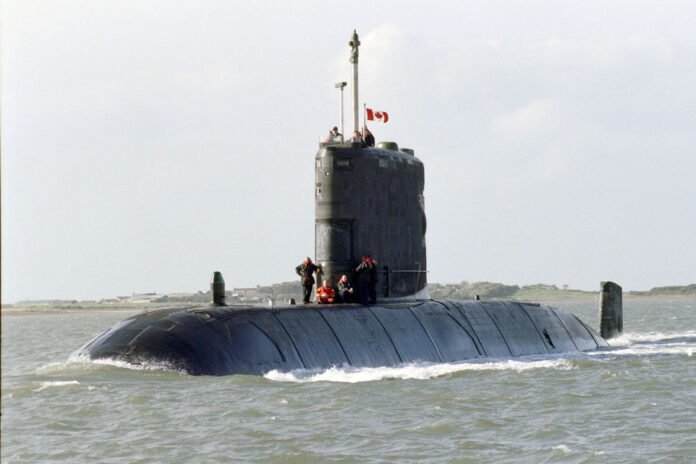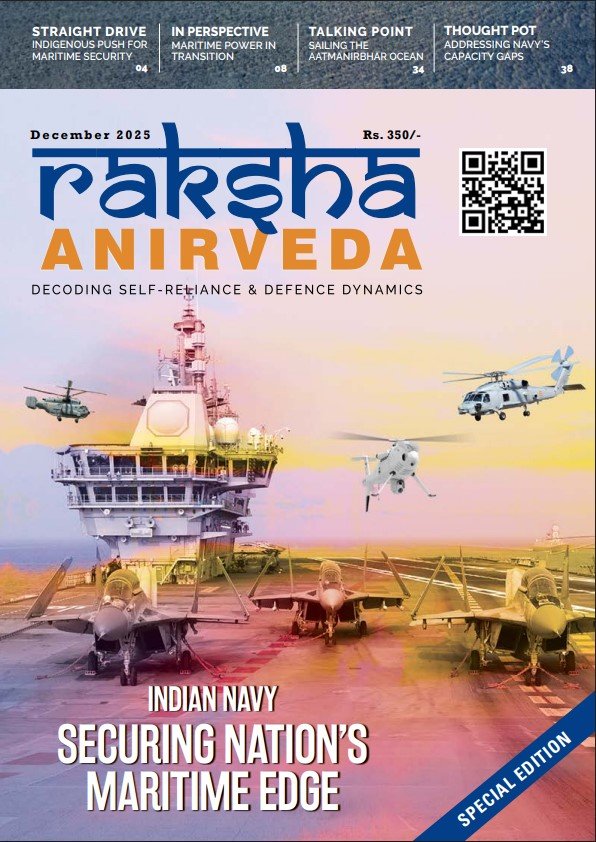ubmarines don’t win wars, but they make sure you don’t lose one.” “SSubmarines also called “silent warriors” — are one of the most powerful and sought after tools in naval warfare due to their unparalleled stealth, endurance, and versatility. The greatest advantage of submarines is that unlike surface ships, they are less noisy and can operate undetected underwater for extended periods, conduct surveillance deep into enemy territory, launch crippling attacks, and if need be clandestinely launch nuclear weapons.
Based on their purpose, propulsion system, and capabilities – submarines can be classified as Military Submarines, which can be used for defence, surveillance, and attack missions. These include attack submarines (SSN Nuclear-powered attack submarine/ SS Generic attack submarine (non-nuclear) and SSK Diesel-electric attack submarine) which are designed to destroy enemy ships and submarines. In addition to these there are Ballistic Missile Submarines (SSBN) equipped with nuclear missiles (SLBMs), Guided Missile Submarines (SSGN) which carry conventional cruise missiles (like Tomahawk) for land and sea attack, midget Submarines used for special operations or shallow water missions and special Operations Submarines modified or purpose-built for deploying special forces (e.g., SEALs).
The (SSN, SSBN, SSGN) Nuclear-Powered Submarines are powered by a nuclear reactor and virtually impossible to track. This enables them to dive deep and remain submerged for months together. They are relatively more expensive to build than the Diesel-Electric submarines and hence used in limited numbers mainly by the US, Russia, and China to ambush enemy ships, lay mines, or protect one’s own aircraft carriers and strategic ports.
The Diesel-Electric Submarines (SSK) on the other hand slow moving and require Air-Independent Propulsion (AIP) to stay submerged for weeks.
The Electric Submarines- mostly small or midget types are powered by batteries which need to be charged frequently on the surface or at port – hence can stay underwater for a limited period.
Submarines- a nation’s insurance policy
Submarines, especially nuclear ones, are often described as a nation’s “insurance policy” in the sense that you may not notice their presence but are sure to miss their absence.
Strategically, submarines are the cornerstone of credible nuclear deterrence. Nuclear ballistic missile submarines (SSBNs), which form the sea-based leg of a nation’s nuclear triad, offer survivability that land- or air-based weapons cannot. They ensure a second-strike capability—even in the event of a surprise nuclear attack—because they can hide in the depths of the ocean, move silently, and launch missiles from thousands of kilometres away.
Ballistic missile submarines (SSBNs) can carry nuclear weapons and stay hidden underwater. Like an insurance policy, you may never use them but their existence provides security, stability, and confidence. Submarines, especially nuclear ones, are stealthy and mobile and hard to Target. Not just nuclear: even diesel subs work as insurance by threatening enemy ships, blocking naval routes, and conducting intelligence missions.
Submarines also play a vital role in intelligence, surveillance, and reconnaissance (ISR). They can eavesdrop on undersea communication cables, monitor naval activity, or gather oceanographic data—without being detected. In contested maritime zones such as the South China Sea, the Taiwan Strait, or the Persian Gulf, the ability of submarines to operate covertly provides a significant strategic advantage.
Submarines play a crucial role in anti-access/area denial (A2/AD) strategies and can slip past enemy radar – undetected and strike at ports, oil rigs, or warships. This can disrupt the enemy war planning by forcing them to allocate disproportionate resources to submarine tracking and defence.
Submarines are symbols of technological and industrial maturity. Designing and building a modern submarine—especially nuclear-powered ones—requires mastery over metallurgy, propulsion systems, weapon integration, hydrodynamics, and stealth technology. A capable submarine arm reflects not just naval strength but also national innovation and self-reliance.
The greatest advantage of submarines is that unlike surface ships, they are less noisy and can operate undetected underwater for extended periods, conduct surveillance deep into enemy territory, launch crippling attacks, and if need be clandestinely launch nuclear weapons
History of Submarines
The story of the submarine begins not with the evolution of steel and nuclear reactors, but with wood, human muscle, and ingenuity. The idea of underwater navigation dates back centuries, but practical submarine development began in the 17th century.
The first recorded submarine was Dutch engineer and inventor Cornelius Drebbel’s boat Built for King James I of England in the early 1600s. It used oars and pigskin to remain underwater in the Thames for short durations. However, it was the 18th and 19th centuries that saw real experimentation.
However, David Bushnell’s Turtle became the first military submarine to be used in combat — during the American Revolutionary War. It was a one-man, hand-cranked vessel designed to drill explosives into the hulls of British ships. Though the attack failed, it set a precedent.
In the American Civil War, the CSS Hunley, a Confederate hand-powered submarine, famously became the first to sink an enemy warship (the USS Housatonic) in 1864—though it also sank soon thereafter. These early designs and experiments proved that underwater stealth attacks are not only possible—but deadly.
World War I: The Rise of the U-boat
World War I witnessed the first large-scale military use of German U-boats (an anglicised form of the German word U-Boot or Unterseeboot meaning ‘under-sea boat’), which revolutionised naval warfare. Instead of engaging in traditional ship-to-ship combat, the U-boats adopted stealth, subversion, and surprise.
Their most infamous tactic was unrestricted submarine warfare—attacking military and civilian ships without warning. The sinking of the RMS Lusitania by U-20 killing 1,198 people in 1915, was a turning point that galvanised public opinion and eventually led to US entry into the war.
By war’s end, U-boats had sunk over 5,000 Allied and neutral ships. At the start of World War I in 1914, Germany had 48 submarines of 13 classes in service or under construction. Though Germany lost many submarines, the concept of undersea vessels to strangle enemy logistics was now firmly established.
World War II: The Submarine as Strategic Game-Changer
In World War II, both the Allies and Axis powers refined submarine warfare.
Germany’s Wolf Pack tactics involved multiple U-boats to attack Allied convoys in the Atlantic. Initially devastating, this tactic nearly cut Britain off from critical supplies. The Battle of the Atlantic became one of the longest and most consequential campaigns of the war. German submarines sank over 14 million tons of Allied shipping, though advances in sonar, radar, depth charges, and air patrols eventually turned the tide against the U-boats.
During the war, the US Navy waged a highly effective submarine campaign against Japan in the Pacific theatre. American submarines, though only about 2% of the US Navy fleet sank 55% of all Japanese merchant ships and 30% of its navy, including the aircraft carrier Shōkaku, battleship Kongō, and the supercarrier Shinano. They crippled Japan’s supply lines and oil imports, hastening its defeat.
The war also saw the introduction of the first snorkel system by the Germans (allowing diesel subs to run submerged) and early concepts of missile-launching subs.
Cold War and the age of nuclear deterrence
The Cold War elevated submarines from commerce raiders to instruments of strategic nuclear deterrence.
In 1954, the United States launched USS Nautilus, the first nuclear-powered submarine, capable of remaining submerged for months. Nautilus’ successful underwater trans-polar voyage in 1958 symbolised the dawn of a new era.
Soon after, the US deployed SSBNs (ballistic missile submarines) equipped with Polaris missiles. The Soviet Union responded with its own nuclear submarines and SLBM (Submarine-Launched Ballistic Missile) capability. This led to the concept of Mutually Assured Destruction (MAD)—a key feature of nuclear deterrence strategy.
Submarines became central to the nuclear triad (alongside land-based ICBMs and strategic bombers). Their ability to hide in the oceans and survive a first strike made them the ultimate second-strike platforms.
The Nuclear-Powered Submarines are virtually impossible to track. This enables them to dive deep and remain submerged for months together. They are relatively more expensive to build than the Diesel-Electric submarines and hence used in limited numbers by high-end countries like the US, Russia, and China to ambush enemy ships, lay mines, or protect one’s own aircraft carriers and strategic ports
Notable submarine operations
Cuban Missile Crisis (1962): A Soviet submarine carrying nuclear-tipped torpedoes was depth-charged by the US Navy. The situation nearly escalated into a nuclear exchange before the captain decided not to launch.
K-129 Incident (1968): A Soviet submarine sank in the Pacific. The US later attempted a covert recovery operation under Project Azorian.
USS Scorpion (1968): A US nuclear submarine mysteriously sank, still raising questions today.
By the 1980s, both superpowers had developed quiet-running submarines, long-range SLBMs (like Trident and R-29), and attack submarines (SSNs) designed to hunt each other. This underwater chess match continued until the collapse of the USSR.
Post-Cold War to the Present: The Era of Silent Power
Today, submarines remain at the forefront of strategic military planning. Technological advances have made modern submarines quieter, deadlier, and more versatile. Their roles have expanded to include:
- Intelligence gathering (e.g., tapping undersea cables)
- Special operations deployment
- Electronic warfare and cyber infiltration
- Cruise missile strikes (like the US Navy’s Tomahawk attacks from submarines in Syria)
Countries like China and India have invested heavily in both nuclear and diesel-electric submarines. The Indo-Pacific region now hosts an underwater arms race, as nations seek to control vital sea lanes and deter rivals.
To sum up, submarines are not just war machines; they are strategic chess pieces. From peacetime surveillance to wartime dominance and nuclear deterrence, they offer capabilities that no other platform can match—making them indispensable in shaping the balance of power at sea. The role of submarines in modern warfare is not limited to major powers. Nations like Iran and North Korea use smaller submarines for asymmetric warfare, harassment, and covert operations in shallow waters.
–The writer is a seasoned media professional with over three decades of experience in print, electronic, and web media. He is presently Editor of Taazakhabar News. The views expressed are of the writer and do not necessarily reflect the views of Raksha Anirveda






